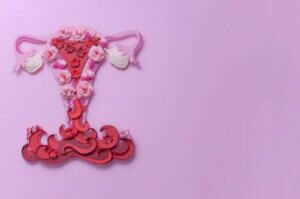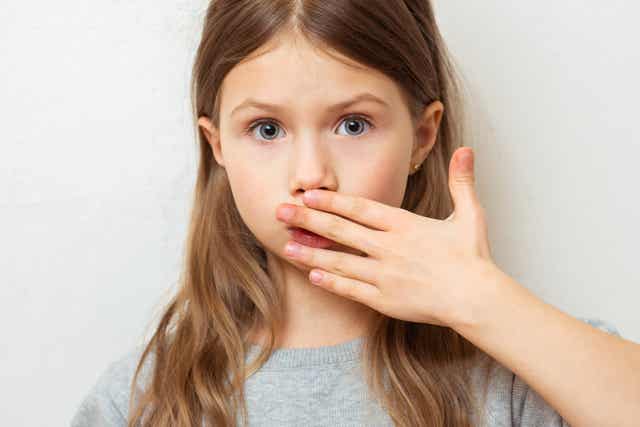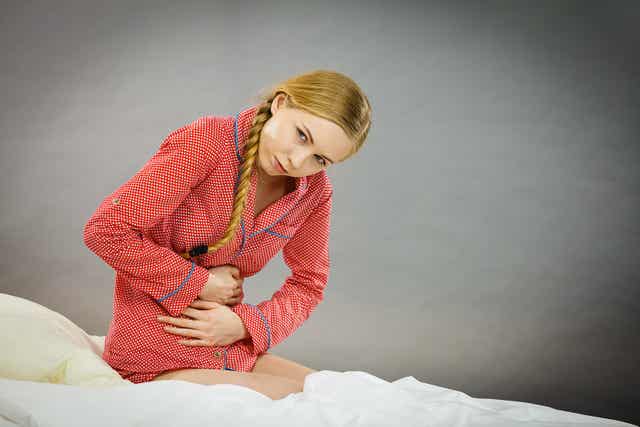What Is A Girl's First Period Like?

A girl’s first period is a subject that, on many occasions, brings about doubts, both for the girl and her family. In any case, we need to normalize and see our daughter’s first period as something healthy and address it in the most natural way possible.
She’ll probably have questions about her first period. Therefore, in the article to follow, we’ll talk about a girl’s first period. What is it like? And what do you need to know about it?
What is menstruation?
Menstruation, colloquially known as a period, is the loss of blood that comes from the uterus through the vagina of a girl or woman. Menstruation is a fundamental part of female fertility. Women have hormonal cycles that last about a month and that repeat for much of their lives.

The main female sex hormones are estrogens and progestogens. Among other functions, these hormones are responsible for female ovulation, which happens once a month. Also, they prepare a woman’s body for possible fertilization of that ovum and a future fetus.
This “preparation” in case of pregnancy is carried out by conditioning the uterus. Therefore, small blood vessels are formed, which surround and cushion the entire uterus, and that would serve as nutritional support to the fetus in the event of fertilization.
Therefore, the blood that women lose each month that forms menstruation is nothing more than all this tissue that has been formed in case of pregnancy. In the end, the body doesn’t need it, so it expels it.
You may be interested in: Irregular Menstrual Cycles: Causes, Signs and Treatment
When does a girl’s first period happen?
The first period is also known as a “menarche.” The menarche signifies the girl’s entrance into puberty. This is a stage of change, both physical and psychological, that marks the transition from childhood into adulthood. In this stage, secondary sexual characteristics develop. In addition, the body ends up reaching the size and weight of an adult.
Both the age of onset of puberty and menarche vary from girl to girl. It’s believed that genetics, nutritional status, and body composition play a role in influencing it. This is because the body needs an adequate amount of fat to have a successful pregnancy. Therefore, a woman won’t enter the childbearing stage and her periods won’t start until this happens.
So, it’s normal for a girl to get her first period between ages 8 and 16. Despite this, the most common age is around 11 or 12. But don’t worry if it doesn’t happen then.
Events occur in the following order: First, the girl begins to grow faster and to develop certain secondary sexual characteristics. The most noticeable is breast growth. Typically, the first period will appear about two years after a girl’s breasts begin to develop.
What is the first period like?
The first period is very different from one woman to another. While some girls only bleed a little the first time, other experience heavy bleeding. In addition to the amount, the duration and the menstrual symptoms can also be different between women, both in the first period and the ones to follow.

Normally, the first period lasts between 3 and 7 days. Discomfort such as headaches, abdominal pain, bloating, or irritability may occur in the days before and during bleeding.
Also, during the first months, the cycles might not be regular, and periods aren’t the same for every woman. This means that the cycles might have different lengths, making it difficult to predict when the next period will be. In addition, some may be heavier and others lighter, and you might even have spotting in the middle of the cycle.
Keep reading to learn more: How to Talk to Your Daughter About Menstruation
As for the first period, you should know…
It’s a natural moment that every woman must go through. The most important thing will be to clarify, in the most natural way possible, all the doubts that the girl might have. You need to reassure your daughter and explain in a simple way what it is and how the process works.
In addition to that, we have to take into account that both the age characteristics of a girl’s first period will be very different from one adolescent to another. Therefore, we can’t compare them to each other. It’s important that our children get annual check-ups at the pediatrician to make sure that they’re growing and developing correctly.
Also, before you worry about any sign or symptom, it’s best to go see a specialist. They’ll determine if everything’s okay, or if there’s a problem.
A girl’s first period is a subject that, on many occasions, brings about doubts, both for the girl and her family. In any case, we need to normalize and see our daughter’s first period as something healthy and address it in the most natural way possible.
She’ll probably have questions about her first period. Therefore, in the article to follow, we’ll talk about a girl’s first period. What is it like? And what do you need to know about it?
What is menstruation?
Menstruation, colloquially known as a period, is the loss of blood that comes from the uterus through the vagina of a girl or woman. Menstruation is a fundamental part of female fertility. Women have hormonal cycles that last about a month and that repeat for much of their lives.

The main female sex hormones are estrogens and progestogens. Among other functions, these hormones are responsible for female ovulation, which happens once a month. Also, they prepare a woman’s body for possible fertilization of that ovum and a future fetus.
This “preparation” in case of pregnancy is carried out by conditioning the uterus. Therefore, small blood vessels are formed, which surround and cushion the entire uterus, and that would serve as nutritional support to the fetus in the event of fertilization.
Therefore, the blood that women lose each month that forms menstruation is nothing more than all this tissue that has been formed in case of pregnancy. In the end, the body doesn’t need it, so it expels it.
You may be interested in: Irregular Menstrual Cycles: Causes, Signs and Treatment
When does a girl’s first period happen?
The first period is also known as a “menarche.” The menarche signifies the girl’s entrance into puberty. This is a stage of change, both physical and psychological, that marks the transition from childhood into adulthood. In this stage, secondary sexual characteristics develop. In addition, the body ends up reaching the size and weight of an adult.
Both the age of onset of puberty and menarche vary from girl to girl. It’s believed that genetics, nutritional status, and body composition play a role in influencing it. This is because the body needs an adequate amount of fat to have a successful pregnancy. Therefore, a woman won’t enter the childbearing stage and her periods won’t start until this happens.
So, it’s normal for a girl to get her first period between ages 8 and 16. Despite this, the most common age is around 11 or 12. But don’t worry if it doesn’t happen then.
Events occur in the following order: First, the girl begins to grow faster and to develop certain secondary sexual characteristics. The most noticeable is breast growth. Typically, the first period will appear about two years after a girl’s breasts begin to develop.
What is the first period like?
The first period is very different from one woman to another. While some girls only bleed a little the first time, other experience heavy bleeding. In addition to the amount, the duration and the menstrual symptoms can also be different between women, both in the first period and the ones to follow.

Normally, the first period lasts between 3 and 7 days. Discomfort such as headaches, abdominal pain, bloating, or irritability may occur in the days before and during bleeding.
Also, during the first months, the cycles might not be regular, and periods aren’t the same for every woman. This means that the cycles might have different lengths, making it difficult to predict when the next period will be. In addition, some may be heavier and others lighter, and you might even have spotting in the middle of the cycle.
Keep reading to learn more: How to Talk to Your Daughter About Menstruation
As for the first period, you should know…
It’s a natural moment that every woman must go through. The most important thing will be to clarify, in the most natural way possible, all the doubts that the girl might have. You need to reassure your daughter and explain in a simple way what it is and how the process works.
In addition to that, we have to take into account that both the age characteristics of a girl’s first period will be very different from one adolescent to another. Therefore, we can’t compare them to each other. It’s important that our children get annual check-ups at the pediatrician to make sure that they’re growing and developing correctly.
Also, before you worry about any sign or symptom, it’s best to go see a specialist. They’ll determine if everything’s okay, or if there’s a problem.
All cited sources were thoroughly reviewed by our team to ensure their quality, reliability, currency, and validity. The bibliography of this article was considered reliable and of academic or scientific accuracy.
- Marco Hernández M, Benítez R, Medranda I, Pizarro C, Méndez MJ. Variaciones fisiológicas normales del desarrollo puberal: Edad del inicio puberal, edad de la menarquia y talla. An Pediatr. 2008 Aug 1;69(2):147–53.
- Hernández MI, Unanue N, Gaete X, Cassorla F, Codner D. E. Edad de la menarquia y su relación con el nivel socioeconó mico e índice de masa corporal. Rev Med Chil [Internet]. 2007 Nov [cited 2020 Jul 8];135(11):1429–36. Available from: https://scielo.conicyt.cl/scielo.php?script=sci_arttext&pid=S0034-98872007001100009&lng=es&nrm=iso&tlng=es
- Menarquia y factores asociados [Internet]. [cited 2020 Jul 8]. Available from: http://scielo.sld.cu/scielo.php?pid=S1561-29532013000100004&script=sci_arttext&tlng=pt
This text is provided for informational purposes only and does not replace consultation with a professional. If in doubt, consult your specialist.








